An obsessive focus on the user experience has helped to make Apple one of the most successful companies in the world.
What is Apple?
Apple, based in Cupertino, CA, is one of the most valuable companies in the world. It produces popular digital gadgets, including Macs, iPods, iPhones, and iPads.
The company was founded in 1976 by two young hackers, Steve Jobs and Steve Wozniak. Its second product, the Apple II, was the first personal computer to achieve mass-market success. The Macintosh, released in 1984, introduced the modern graphical user interface to the mainstream.
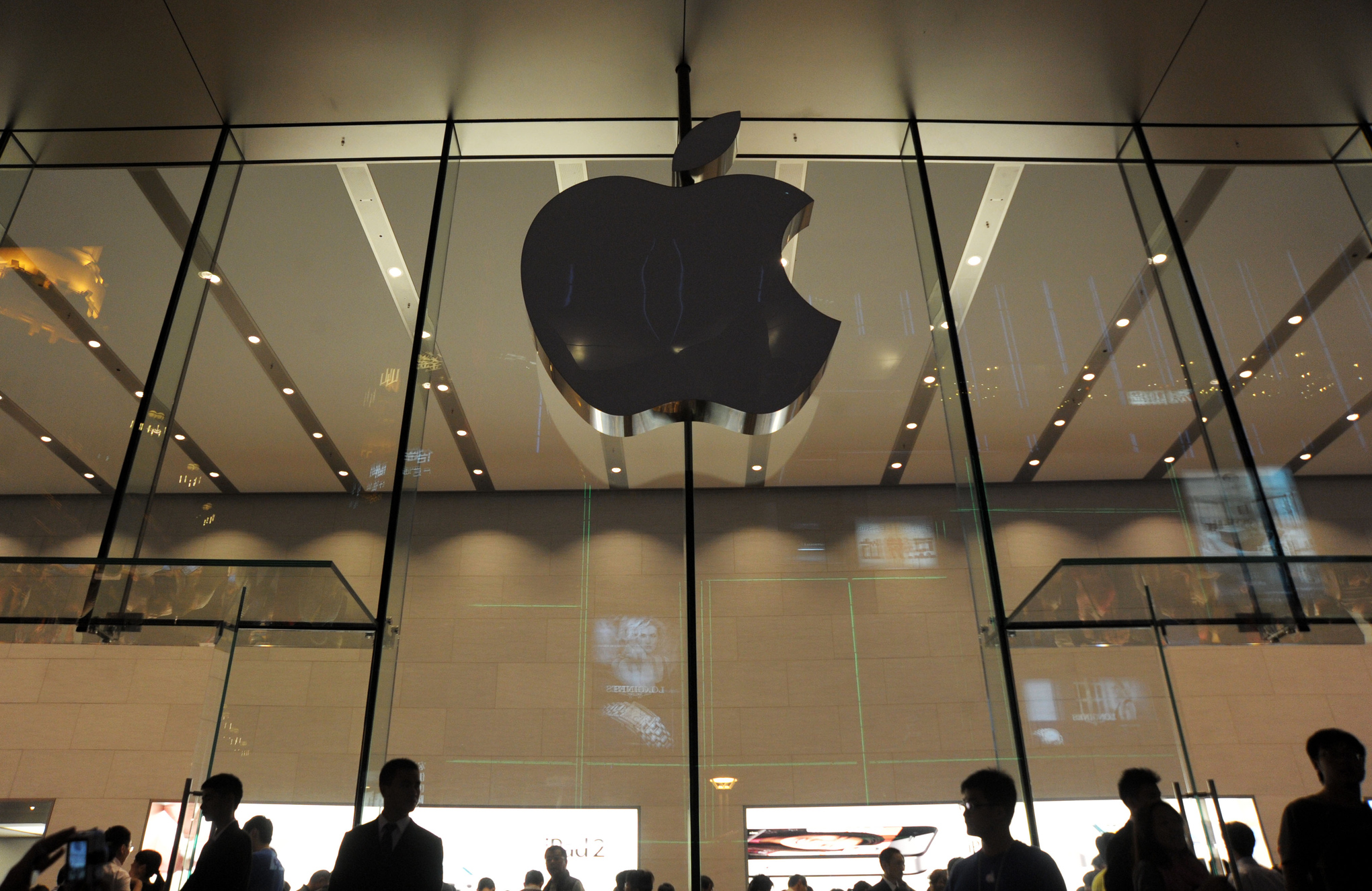
An Apple store in Shanghai in 2011. (ChinaFotoPress/Getty Images)
Apple began to struggle after its board ousted Steve Jobs from the company in 1985. When Jobs returned to Apple in 1997, it was close to bankruptcy. Then Jobs led a spectacular recovery, introducing the iPod in 2001, the iPhone in 2007, and the iPad in 2010. The result: Apple earned almost $40 billion in profits in its 2014 fiscal year.
Jobs died of pancreatic cancer in 2011. Since then, the company has been led by Tim Cook, Jobs's longtime deputy.
Apple has been a Silicon Valley trend-setter for almost four decades. The Apple II, Macintosh, iPod, iPhone, and iPad have all been widely emulated — if not outright copied — by Apple's competitors.
Apple's success is due in large part to its obsessive focus on the user experience. Apple is a designer-centric company that likes to build all parts of a product — hardware, software, and online services — itself. That approach has allowed Apple to build some of the most elegant and user-friendly products ever created.
What was the Apple II?
The Apple II was the first personal computer to achieve significant commercial success. It was designed in 1977 by Steve Wozniak, a brilliant 26-year-old engineer with a knack for packing a lot of functionality into a small and affordable package.

Wozniak designed the Apple II in the Palo Alto garage of Steve Jobs's parents. (Allie Caulfield)
While Wozniak was designing the Apple II, Steve Jobs was figuring out how to sell it. At the time, it was conventional for PCs to be sold as kits, with the user acquiring components such as the keyboard and power supply separately. That's how Apple's first product, the Apple I, had been sold. But Jobs realized that this drastically limited the potential market. So Apple sold the Apple II pre-assembled in an attractive plastic case with a built-in keyboard. It initially cost $1298, or about $5000 in 2014 dollars.
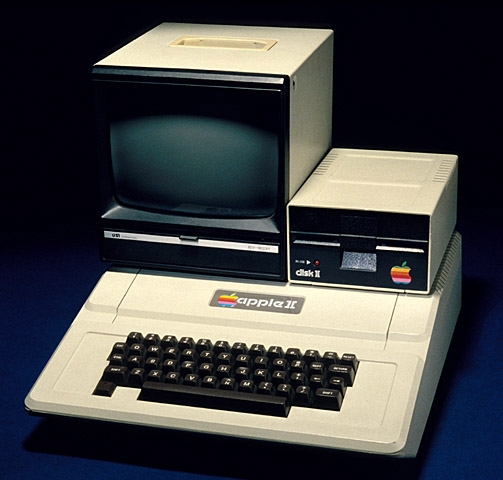
An Apple II. (National Museum of American History)
Still, the Apple II wasn't very useful. Many seasoned computer professionals — accustomed to more powerful computers from companies like IBM and DEC — dismissed it as an underpowered toy. There was virtually no software available for it. The main thing users could do with an Apple II was to write and run programs in the BASIC programming language.
That changed in 1979 when programmer Dan Bricklin created Visicalc, the first spreadsheet program, for the Apple II. Visicalc made the Apple II the first PC with a serious business purpose, and sales of the Apple II exploded.
The Apple II also became popular in the education market. Apple sold hundreds of thousands of computers to schools that wanted to give their students a chance to learn how to program.
Apple continued selling Apple II computers until 1993, when they were discontinued in favor of Macintosh computers. In total, around 5 million Apple II computers were sold.
What is a Macintosh?
The Macintosh, or Mac, is a line of personal computers Apple has sold since 1984. The original Macintosh was the first commercially successful computer to use a graphical user interface (GUI) based on a mouse. It cost $2495, or about $5700 in 2014 dollars.
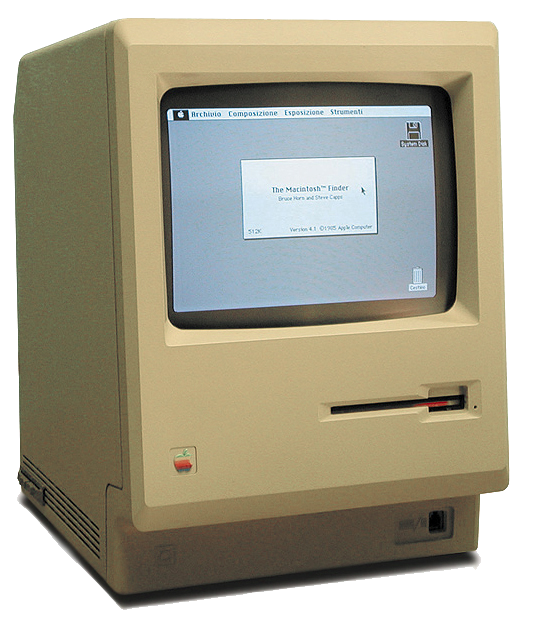
The original Macintosh.
The basic ideas of the Macintosh interface — windows, menus, icons, and the like — were developed at Xerox's Palo Alto Research Center in the 1970s. But Xerox never made a serious effort to turn the technology into a commercial product. Steve Jobs secured a demo of Xerox's technology for his engineers, who began working on their own implementation.
The original Macintosh had significant limits. It had a tiny black-and-white display, no hard drive, and barely enough computing power to run its complex graphical software. But subsequent models were more powerful. Apple brought color to the Macintosh with the Macintosh II in 1987.
The Mac's innovative graphical interface quickly attracted imitators. The most significant was Microsoft, which introduced the first version of Windows in 1985. Windows borrowed heavily from the ideas the Macintosh pioneered, and Apple sued Microsoft for stealing its ideas. Microsoft largely prevailed in a 1994 ruling.
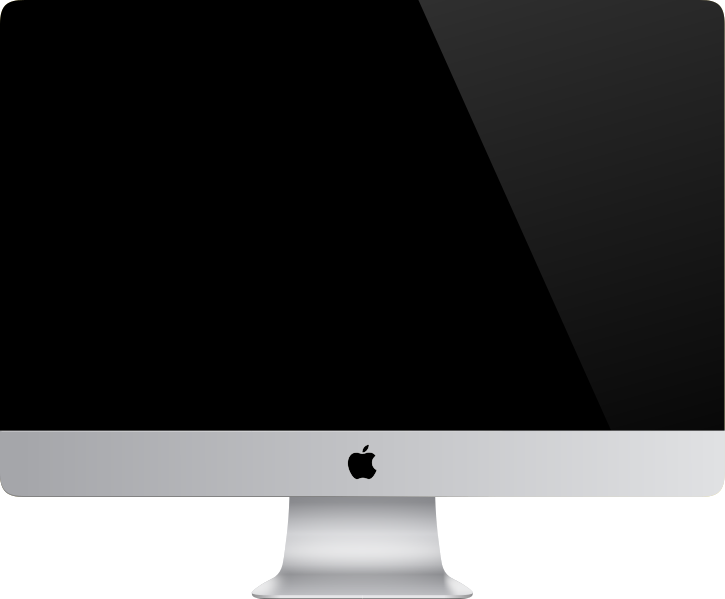
The modern iMac (Rafael Fernandez)
The Mac's powerful graphics capabilities, along with an affordable laser printer Apple introduced in 1985, sparked the desktop publishing revolution. Software like Aldus Pagemaker and Adobe Illustrator allowed designers to design documents entirely digitally for the first time. Many graphic designers became loyal Mac users.
Today, Apple sells Macs in laptop and desktop formats. The laptops are the MacBook Air and MacBook Pro. The desktop Macs are the all-in-one iMac, the expensive and high-powered Mac Pro, and a budget model, the Mac Mini. Apple sold almost 20 million Macs in 2014.
What's the most famous ad in Apple history?
In January 1984, Apple was ready to introduce the Macintosh, and the company celebrated with one of the most famous ads in advertising history:
The ad, depicting an attractive young woman rebelling against a repressive police state, was a shot at IBM, which then dominated the computer industry and had recently entered the personal computer market. "On January 24th, Apple Computer will introduce Macintosh," the ad says. "And you'll see why 1984 won't be like '1984.'"
The ad was aired nationally only once, during the Super Bowl.
Two decades later, Apple updated the ad by adding an iPod to the woman's belt:
Why was Steve Jobs fired from Apple and what did he do next?
To raise the money they needed to get the Apple II off the ground, Steve Jobs and Steve Wozniak brought in investors who wound up controlling a majority of Apple's board seats. Steve Jobs was brilliant, but in the early 1980s Apple's board felt — not unreasonably — he was too young and temperamental to run Apple.
So in 1983, Jobs recruited Pepsi executive John Sculley to run Apple, famously asking him "Do you want to spend the rest of your life selling sugared water, or do you want a chance to change the world?"

Steve Jobs and John Sculley in 1984. (Marilyn K. Yee/New York Times Co./Getty Images)
But they clashed frequently, and by 1985 Sculley had had enough. He convinced the board to sideline Jobs.
So Jobs left to found a new computer company called NeXT. It created a cube-shaped computer that was a technical marvel, but the device's $6500 price tag made it a tough sell. In 1993, NeXT stopped making computers and focused on selling the company's innovative software, but the company struggled to gain traction.
Apple was struggling too. The software that powered Apple's Macintosh computers were beginning to show its age. Macs no longer had a big technical advantage over cheaper PCs running Microsoft Windows. And the sequence of executives who ran Apple in the post-Jobs era seemed increasingly baffled about what to do to regain Apple's competitive edge.
In desperation, Apple CEO Gil Amelio acquired NeXT for $400 million in 1997. A few months later, the board fired Amelio and gave Jobs control of the company (though he wouldn't formally accept the title of CEO until 2000). On paper, Apple had acquired NeXT, but practically speaking NeXT took over Apple. Several NeXT veterans became senior Apple executives, and the operating system NeXT developed became the technical foundation for modern Macs as well as the iPhone and iPad.
How did Steve Jobs turn Apple around?
When Steve Jobs took the reins at Apple in 1997, the company was in tough shape. It had a bewildering array of products, no clear strategy, and was losing tens of millions of dollars every quarter.

Steve Jobs introducing the iPhone in 2007. (David Paul Morris/Getty Images)
Jobs acted decisively. He cancelled 70 percent of Apple's products and laid off more than 3000 people, turning a $1 billion loss in 1997 into a $300 million profit in 1998. Then he started work building products that became Silicon Valley legends:
- In 1998, Jobs unveiled the iMac. It sported a colorful, curvy look and was one of the most affordable computers Apple had ever made.
- In 2001, Apple released the iPod music player. Customers loved its elegant click-wheel interface. More importantly, the iPod worked seamlessly with iTunes, Apple's jukebox software for the Mac, making it easy to get music from CDs (and, later, from the iTunes music store) onto their iPods. By the end of the decade, Apple had sold more than 200 million iPods.
- Jobs announced the iPhone in 2007. It sported a revolutionary touchscreen interface that transformed mobile phones in much the same way the Macintosh had transformed personal computers 23 years earlier. Apple has sold 500 million iPhones.
- Apple expanded on the iPhone's success in 2010 with the iPad, a tablet computer based on the same software. Apple has sold 200 million iPads.
All of these products were crafted by Apple's top designer, Jony Ive. Jobs found a soul mate in Ive, and would visit Ive's studios on a daily basis to discuss the designs of forthcoming products. Jobs was a perfectionist, frequently rejecting work that wasn't up to his standards.
Jobs was a genius at marketing. He marked his return to Apple with a "Think Different" ad campaign that associated Apple with unconventional thinkers such as Albert Einstein and Mahatma Gandhi. He introduced new products at keynote addresses that became major media events in their own right. And he developed a chain of Apple Stores that ensured that Apple's products would be presented in a favorable light.
Jobs was also one of the savviest negotiators in Silicon Valley. He pulled off a major coup in 2003 by convincing the "big five" record labels to allow Apple to sell their music in the iTunes Music Store, helping to cement the popularity of the iPod.
How has Tim Cook changed Apple since the death of Steve Jobs?
Steve Jobs died of pancreatic cancer in 2011. Since then, Apple has been run by Jobs's longtime deputy, Tim Cook. Before he died, Jobs warned Cook against trying to run Apple by asking how Jobs would have handled each decision. "Just do what’s right," Jobs said. Cook appears to have taken that advice to heart.
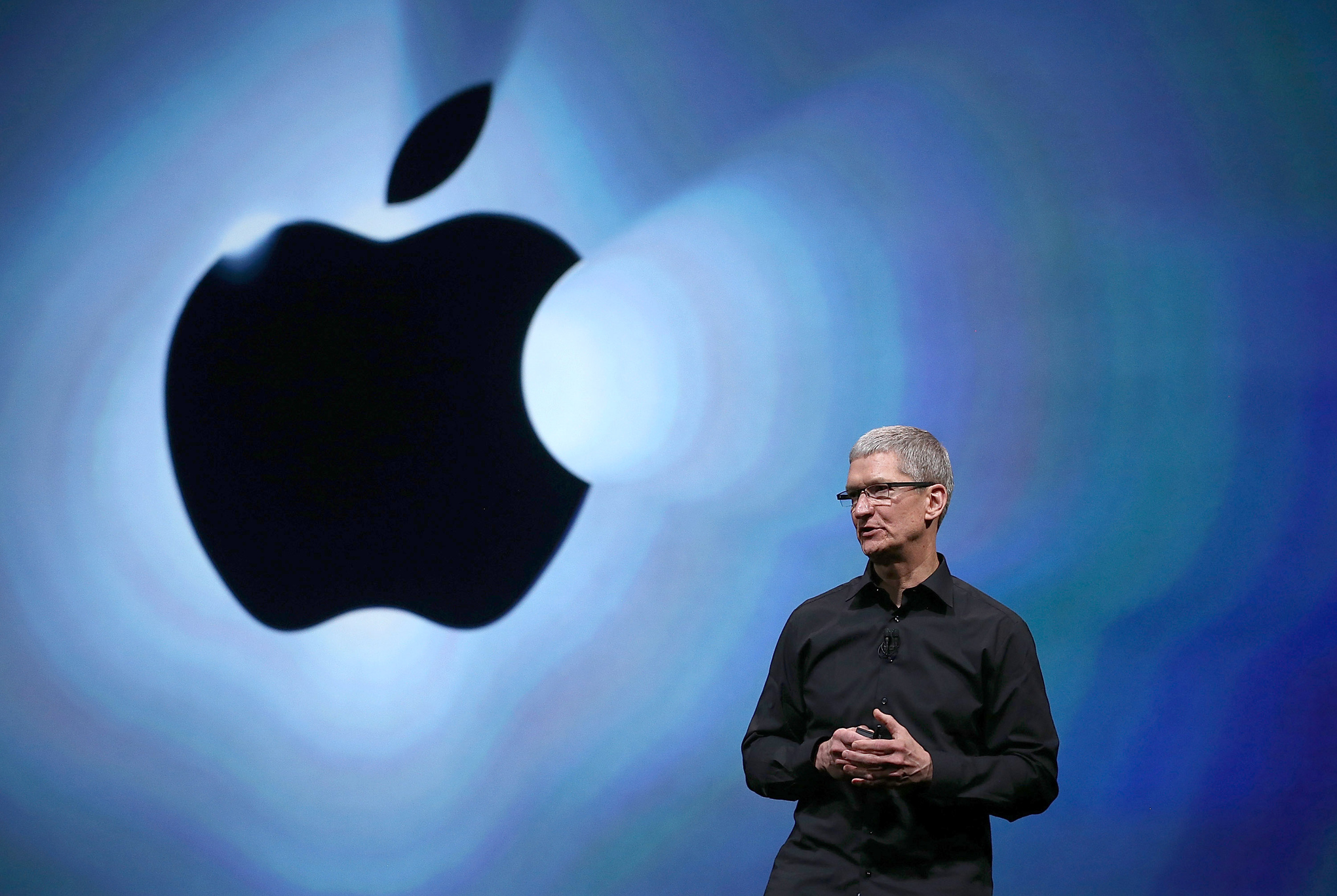
Tim Cook. (Justin Sullivan/Getty Images)
Jobs ran Apple as if it were a small, founder-owned startup. All significant decisions flowed through Jobs. Often, if Jobs wasn't personally interested in a particular task, Apple just wouldn't do it.
For example, Jobs shut down Apple's charitable giving program in 1997 and never re-started it. Jobs directly supervised Apple's mergers and acquisitions, which meant that Apple didn't acquire very many companies. The companies Apple did acquire were invariably small, and they were absorbed into the Apple hierarchy rather than continuing to operate as separate subsidiaries.
Tim Cook has taken a more conventional approach to managing Apple. Fewer decisions flow through Cook directly, which makes it possible for Apple to handle more tasks in parallel.
One of Cook's first moves after taking over at Apple was to establish a matching-gifts program. He also expanded Apple's mergers and acquisitions department, giving the company the ability to consider several deals simultaneously without involving Cook in the details.
Since taking over at Apple, Tim Cook has tried to capitalize on Apple's status as the only technology company that is also a luxury brand. In 2013, Apple paid $73 million to recruit Angela Ahrendts, CEO of the luxury brand Burberry, to run Apple's retail operation. The same year Apple also hired Paul Deneve, CEO of Yves Saint Laurent.
In 2014, Apple purchased Beats, a company that makes high-priced headphones as well as a streaming music service. The acquisition cost $3 billion, much more than Jobs had ever spent on an acquisition. And rather than folding Beats into Apple, as Jobs would likely have done, Cook will allow it to continue operating as an independent subsidiary.
Then in 2015 Apple released the Apple Watch line, which ranges from $350 for the entry-level Sport model to $17,000 for the most expensive Apple Watch Edition. Charging $17,000 for a gadget is extremely unusual for consumer electronics business, but it's commonplace in the luxury watch market.
Where does Apple get its money?
More than half of Apple's revenue comes from iPhones. Macs and iPads are also significant revenue sources. Here is the data from Apple's 2014 fiscal year, which ended on September 30, 2014.
:no_upscale()/cdn.vox-cdn.com/uploads/chorus_asset/file/2465434/apple_revenue.0.png)
Why is Apple so good at making gadgets?
No company is better than Apple at building devices that are powerful, beautiful, and easy to use. Over the last four decades, Apple has produced some of the most beloved products in the technology industry, including the Macintosh, iPod, iPhone, and iPad.
How does Apple do it? A big factor is the distinctive approach to designing products pioneered by Steve Jobs. "Steve felt that you had to begin design from the vantage point of the experience of the user," said former Apple CEO John Sculley, who worked closely with Jobs until Jobs was ousted from Apple in 1985.
"The designers are the most respected people in the organization," Sculley said in a 2010 interview. "Everyone knows the designers speak for Steve because they have direct reporting to him."
It helps that Apple develops so much of its technology in-house. Most technology products are highly modular—most Dell computers, for example, have chips from Intel and an operating system provided by Microsoft. Apple products are different. For example, the iPhone is powered by Apple's A7 chip and runs Apple's iOS operating system. Apple even sells iPhones in Apple-designed retail stores.
Steve Jobs believed that this kind of vertical integration was essential to creating a great user experience. When hardware and software are designed by different companies, it's more difficult to make them work together seamlessly. Creating the whole product allows Apple designers to control every aspect of the user experience and ensure that everything lives up to Apple's exacting standards.
Why is Apple so bad at making online services?
In 2008, Steve Jobs called the team that created Apple's MobileMe online service to an auditorium and asked a question: "Can anyone tell me what MobileMe is supposed to do?" When an engineer provided an answer, Fortune reports, Jobs asked, "so why the fuck doesn’t it do that?"
MobileMe suffered from crippling reliability problems, and it was neither the first or the last time Apple's online services have disappointed customers. Apple has run four online services in the last 15 years — iTools in 2000, .Mac in 2002, MobileMe in 2008, and iCloud in 2011. All have been plagued by reliability and performance issues. And when Apple replaced Google Maps for iPhone with Apple's own mapping app in 2012, the app was widely panned by users.
Apple's poor track record at creating online services is a reflection of the same design-focused development process that allows Apple to create beautiful gadgets. Apple obsessively focuses on the user experience, ensuring that everything the user sees and touches is excellent.
That works great for designing gadgets like the iPod and iPhone. The problem is that creating reliable online services requires paying attention to a lot of details that aren't apparent to the user. Services like iCloud, which helps users to keep their music, photos, and other data synchronized among their devices, depend on a lot of complex behind-the-scenes infrastructure that can't easily be tested in a laboratory.
A key issue is what engineers call scalability: an online service that works flawlessly when tested by 100 people may grind to a halt when it has to serve a million real users.
Scalability isn't an issue for a gadget like an iPod, so Apple's intensive pre-release testing is a good way to make sure the product is ready for market. But no amount of pre-release testing will reveal scaling problems. Rather, engineers must think on their feet, fixing scaling problems on the fly as they're revealed by real-world use. That requires a flexible, decentralized structure — exactly the opposite of Apple's tightly controlled and regimented approach to product development.
What is it like to work at Apple?
Apple is a company with a strong corporate culture. Apple employees are proud to work for one of the most successful companies in the world, and they make significant sacrifices to work on products that could change the world.
Apple is a hierarchical company. Product decisions are made by senior designers and sales executives; rank-and-file employees have limited autonomy.
"When we worked at Apple under Steve Jobs, there was a certain tension that percolated down through the ranks," one former Apple employee wrote. "It was good — it drove people to excellence, but it could wear one down. Today, I'm told that Tim Cook has created a slightly more relaxed atmosphere. But that doesn't mean there isn't the usual Apple pressure to work hard and tackle some very tough work."
Apple has a secretive culture. Apple employees aren't just forbidden from telling the public about future Apple products. Even inside Apple, information is provided on a need-to-know basis. Steve Jobs was ruthless about firing leakers, a policy that helped ensure the public would be surprised when he officially unveiled new products.
/cdn.vox-cdn.com/uploads/chorus_image/image/62238211/72959794.0.1541629947.0.jpg)